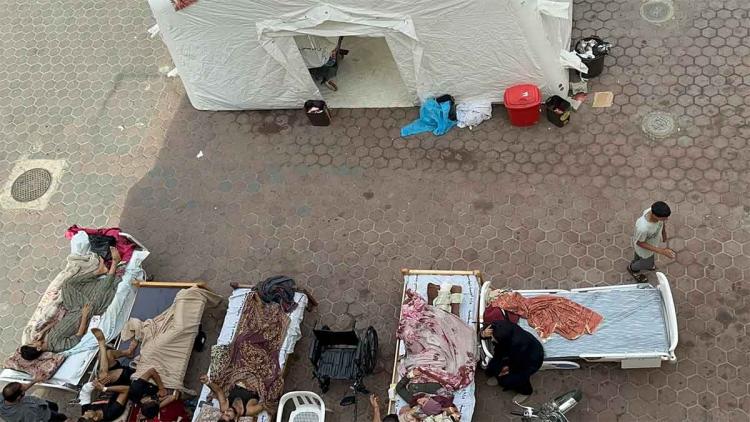The Gaza Strip, housing 2.3 million people, lacks a safe zone amid Israel's offensive against Hamas. Bombardments resumed after a brief ceasefire, causing critical shortages in water, power, and medical supplies. Over 17,100 casualties, mainly women and children, are reported, with 46,000 wounded. UNRWA notes 1.9 million displaced, stressing the region's collapse. Shelter capacity is exceeded fourfold, and aid agencies struggle due to insufficient resources. Israel's evacuation warnings clash with forced relocations to inadequate areas like al-Mawasi. Refugee camps face dire conditions, raising disease risks. UN Secretary-General Guterres calls Gaza "at a breaking point," urging a humanitarian ceasefire. A resolution, backed by 13 countries, faces a US veto and UK abstention, exacerbating the humanitarian crisis. Gaza confronts starvation, emphasizing the urgent need for international intervention.
Key Points
1. The Gaza strip, with a population once at 2.3 million, currently lacks a safe zone, facing intense Israeli bombardment in an area smaller than Heathrow airport.
2. The war initiated after Hamas' attack on Israel on October 7 resulted in a temporary ceasefire ending on December 1, with Israel resuming bombings and Hamas releasing over 100 hostages during the truce.
3. Gaza, under Israeli siege, is experiencing critical shortages of water, power, fuel, and medical supplies. Hospitals have been targeted, exacerbating healthcare challenges.
4. The conflict has claimed over 17,100 lives in Gaza, with 70% being women and children, and over 46,000 wounded. Many remain trapped under rubble, and 1.9 million people, 85% of Gaza's population, are displaced.
5. UNRWA warns of a full-blown collapse in Gaza, with shelters four times over capacity and inadequate aid to meet overwhelming needs.
6. Israel urges civilians to evacuate to safe zones, but the UN's humanitarian chief emphasizes that nowhere is safe in Gaza, including hospitals, shelters, and refugee camps.
7. Concerns are raised about refugee camps lacking basic resources, increasing the risk of infections and diseases.
8. Israel has forced 1.8 million Palestinians into al-Mawasi, an area smaller than Heathrow Airport, lacking water, facilities, shelter, and sanitation.
9. Unicef spokesperson James Elder notes the dire conditions in these areas, where safe zones may become zones of disease.
10. UN Secretary-General Antonio Guterres invokes Article 99, urging the Security Council to avert a humanitarian catastrophe, but a resolution for a humanitarian ceasefire faces a U.S. veto, leaving Gaza at a breaking point with severe food shortages and daily strikes.
(With Agency Inputs)
Read also| Israel resumes water supply to Gaza Strip
Read also| Israel Foreign Minister Alleges UN Chief is Siding with Hamas


















